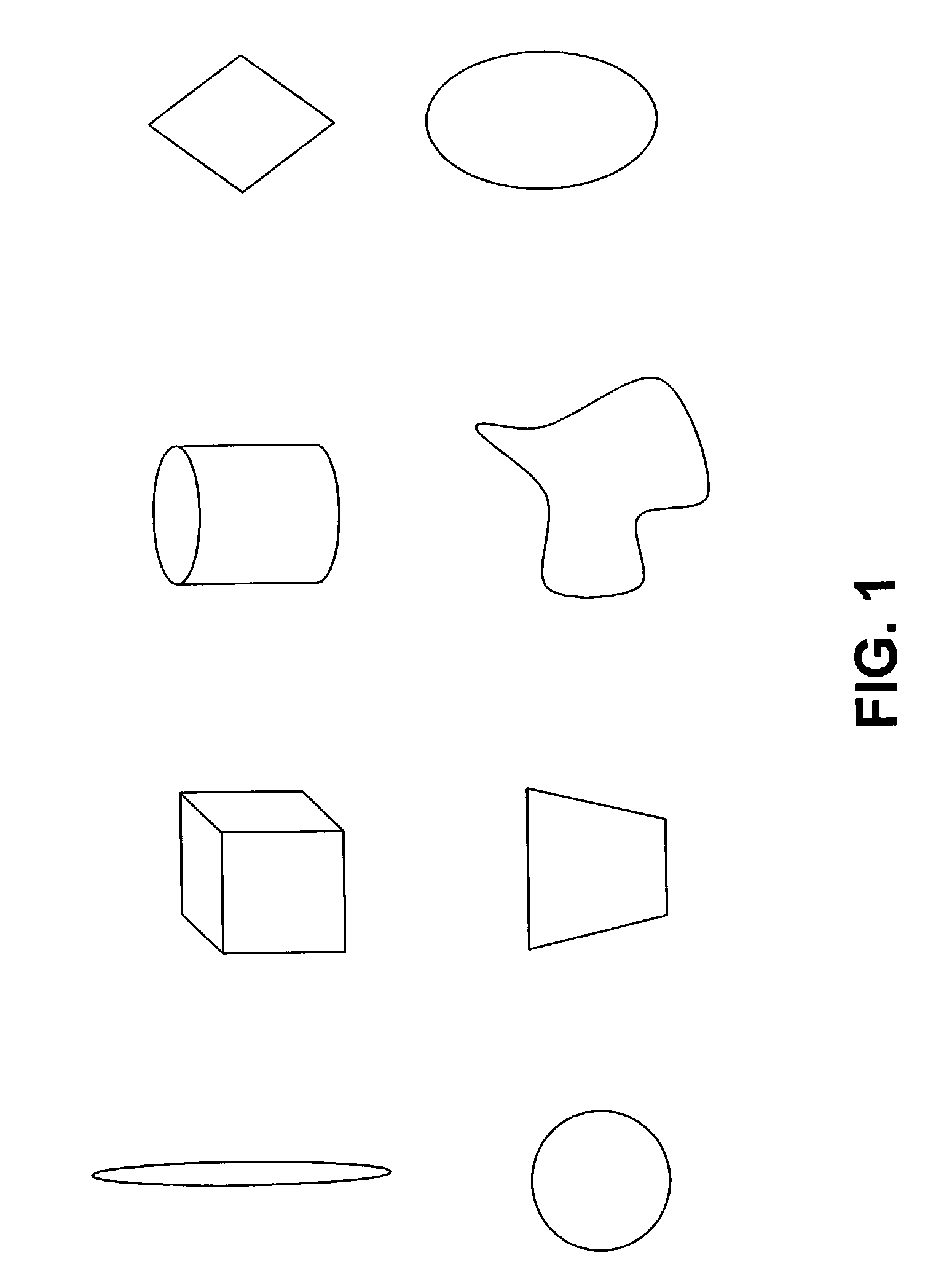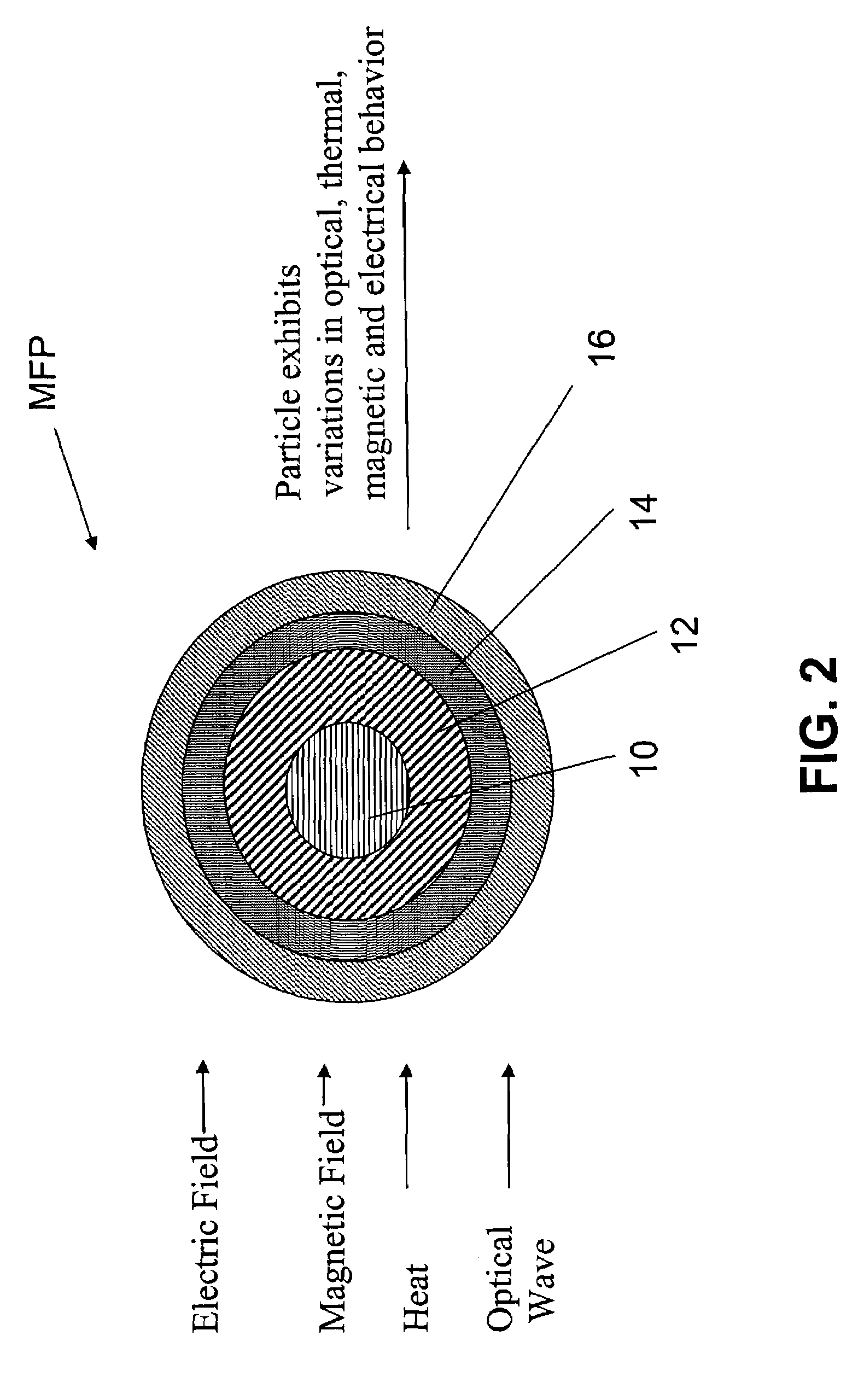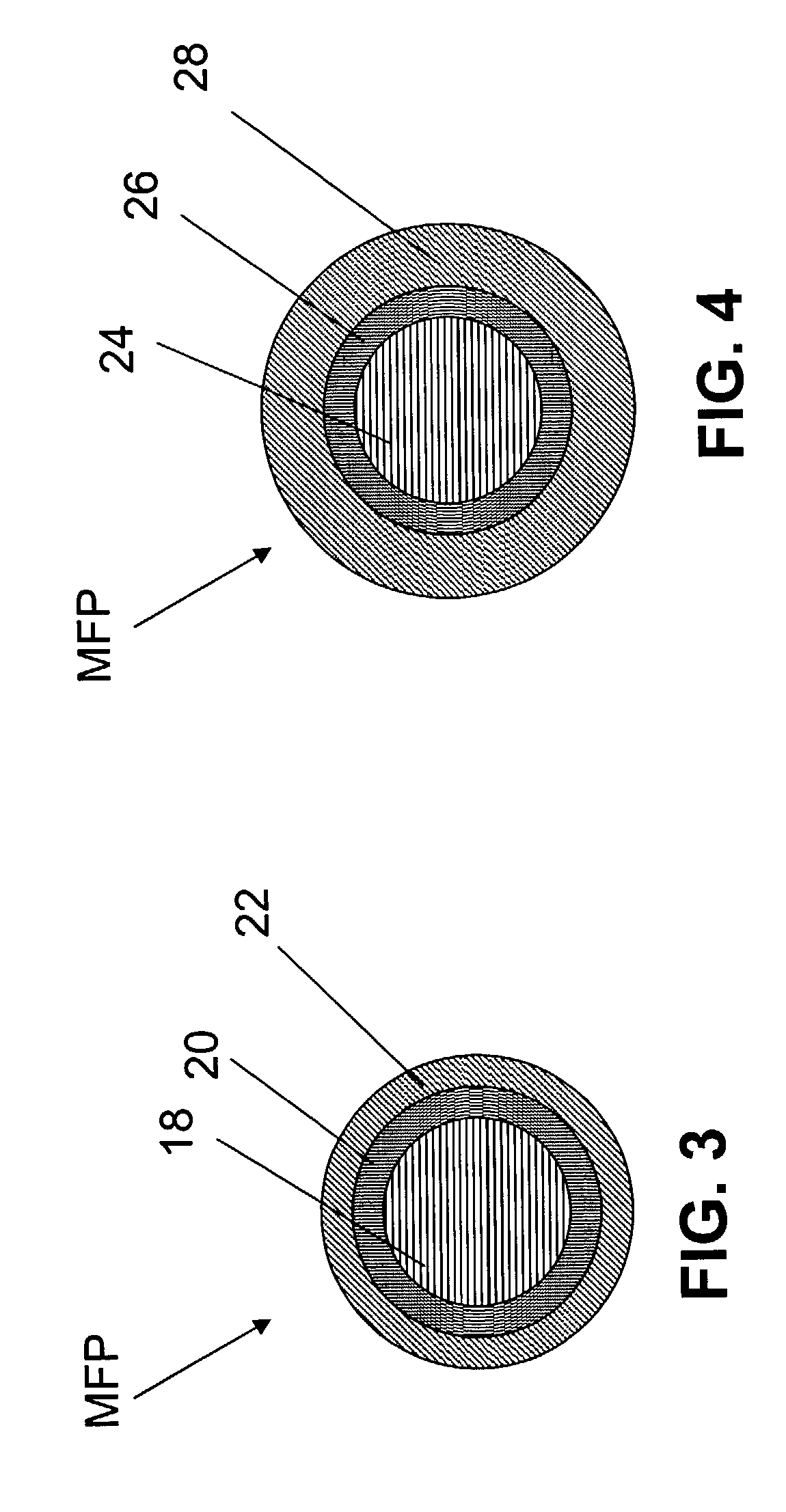Multifunctional particulate material, fluid, and composition
a multi-functional, fluid technology, applied in the field of particle materials, can solve the problems of significantly increasing which is adversely affected by the dispersed heat, and achieves the effect of improving the life of the devi
- Summary
- Abstract
- Description
- Claims
- Application Information
AI Technical Summary
Benefits of technology
Problems solved by technology
Method used
Image
Examples
example 1
[0076]Powder particles of iron with particle size of about 20 nm were synthesized from iron pentacarbonyl using microwave plasma synthesis technique. Argon was used as the plasma gas. The iron powders were subsequently coated with a layer of copper measuring with variable thickness (about 1 nm to 1000 nm) using a chemical synthesis technique. These powders were coated with sodium hexametaphosphate for dispersion in hydraulic oil for use as magneto-rheological fluids with a thermal control. The viscosity of the fluid could be changed by the application of a magnetic field to effect damping in shock absorbers used in automobiles and machinery. The copper coating will dissipate the heat generated from the motion of the moving parts in the damper.
[0077]Table 4 below shows the effect of the applied magnetic field on the yield stress. The magnetic field is varied by varying the current that is applied. The change in yield stress is effected as a result in the change of viscosity. In other...
example 2
[0079]Ultrafine particles of aluminum oxide with a particle size of about 1 nm to 200 nm were prepared using microwave plasma synthesis of aluminum hydroxide using oxygen as the plasma gas. The nanoparticles were coated with a layer of cetyl trimethyl ammonium bromide with a coating thickness from about 1 nm to 20 nm. The coated particles were dispersed in a polyetherimide (PEI) polymer. The particles increased the inherent flame retardancy of the polymer while the fillers increased the mechanical properties and resistance to wear.
[0080]
PEI + 5 wt %PEI + 10 wt %NanoNanoAluminumAluminumPEIOxideOxideAverage Heat Release24.7224.1922.23Rate(KW / m2)Peak Heat Release Rate72.6568.0566.52(KW / m2)Total Heat Release5.265.064.33(MJ / m2)Time for Extinction of221614Flame (sec)
example 3
[0081]Powder particles of iron with particle size ranging from about 1 nm to 40 μm were synthesized by microwave plasma synthesis using iron pentacarbonyl as the source and argon as the plasma gas. The powder particles were coated with a layer of polystyrene. The polystyrene coating was carried out in the gas phase in the microwave plasma synthesis. The thickness of the polystyrene ranges from about 1 nm to 100 nm. The coated particles are dispersed in a carrier fluid such as saline solution, water or blood for injection into a human body. These particles may be surface modified with various procoagulants such as thrombin, factor 7A and like for arresting internal hemorrhage. Also, the particles may be attached with various antibodies / drugs / antigens for toxin, purification, isolation of biomolecules, water and chemical pollution and like.
PUM
| Property | Measurement | Unit |
|---|---|---|
| particle size | aaaaa | aaaaa |
| thickness | aaaaa | aaaaa |
| size | aaaaa | aaaaa |
Abstract
Description
Claims
Application Information
 Login to View More
Login to View More - R&D
- Intellectual Property
- Life Sciences
- Materials
- Tech Scout
- Unparalleled Data Quality
- Higher Quality Content
- 60% Fewer Hallucinations
Browse by: Latest US Patents, China's latest patents, Technical Efficacy Thesaurus, Application Domain, Technology Topic, Popular Technical Reports.
© 2025 PatSnap. All rights reserved.Legal|Privacy policy|Modern Slavery Act Transparency Statement|Sitemap|About US| Contact US: help@patsnap.com



